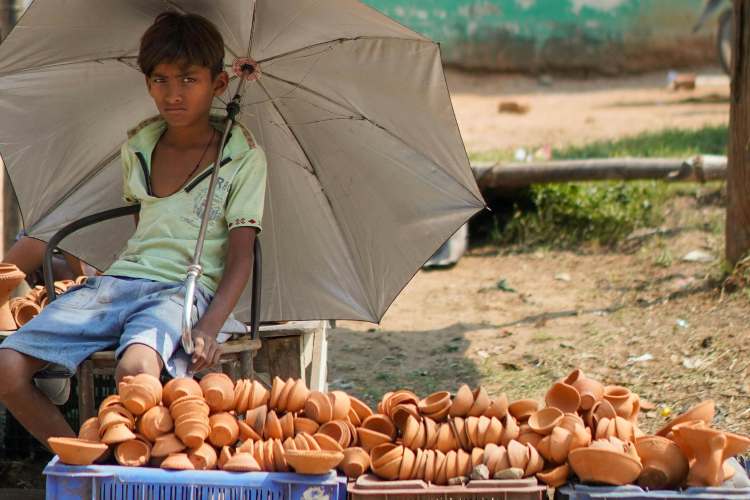State of India’s rural economy: India’s agriculture sector, long regarded as the backbone of the economy, continues to anchor rural demand and cushion the economy during periods of global uncertainty. The Reserve Bank of India’s May 2025 Bulletin notes that agriculture provided a key lift to GDP growth in the January–March quarter, likely marking the strongest quarterly performance in a year. The boost comes after three quarters of moderation, with ripple effects felt across rural consumption, trade, hospitality, transport, and construction.
The uptick follows a robust kharif and rabi harvest. Average mandi prices for most food crops remained below the minimum support price—barring wheat—indicating ample supply. Encouragingly, high-frequency food inflation data up to May 19 shows a broad-based easing in cereal and pulse prices, helping to moderate overall inflation and improve real purchasing power in rural India.
READ | Stalled labour codes imperil India’s economic growth ambitions
Key indicators signal rural revival
Agricultural momentum was visible across other indicators too. A report by CareEdge showed that rabi sowing exceeded last year’s level by 2%, while domestic tractor sales surged 23.4% year-on-year in Q4 FY25—outpacing the 13.5% growth seen in the previous quarter. Fertiliser sales in January and February also picked up by 5.4%, compared with just 0.4% in Q3.
Looking ahead, forecasts of an above-normal southwest monsoon in 2025—at 105% of the long-period average—combined with an early onset, offer a favourable outlook for the upcoming kharif season. Fertiliser demand projections, particularly for nitrogen-based products, have risen in anticipation.
A sector that shapes the rural economy
Agriculture remains central to India’s economic architecture, supporting over 44.8% of the workforce and directly influencing the livelihoods of 60% of the population. Its performance affects not only food security but also shapes rural incomes, consumption patterns, and employment in allied sectors such as livestock, fisheries, and horticulture. A healthy crop cycle stimulates demand for consumer durables, two-wheelers, FMCG products, and housing materials—factors critical to the broader growth engine.
Government schemes have played a pivotal role in enhancing the sector’s impact. The Pradhan Mantri Kisan Samman Nidhi (PM-KISAN), with a budget outlay of Rs 9,339 crore for FY25, continues to provide critical income support to farmers. A 2023 study showed that the scheme led to a 10–15% increase in household expenditure among beneficiaries. The Household Consumption Expenditure Survey reinforces this, reporting that rural per capita monthly spending rose to Rs 3,773 in 2022–23 from Rs 1,430 in 2011–12—partly due to such direct benefit transfers.
Similarly, the Pradhan Mantri Fasal Bima Yojana (PMFBY) aims to cushion farmers against crop loss, covering 5.5 crore farmers across 30 crore hectares. Meanwhile, e-NAM (National Agricultural Market), which links 1.74 crore farmers to digital marketplaces, has enabled better price discovery and market access.
A technological turn — Agriculture 4.0
India’s agriculture is also undergoing a quiet technological transformation. Precision farming, powered by AI, IoT, and robotics, is beginning to make inroads. IoT sensors allow for real-time monitoring of soil and crop conditions, enabling smarter input use. Machine learning models help predict yields, detect diseases, and improve harvest efficiency. Though still nascent, agricultural robotics could revolutionise labour-intensive processes in the future.
Yet this digital pivot is not without barriers. Widespread adoption will depend on addressing infrastructure deficits, improving digital literacy, and ensuring affordability for smallholders. Without such enabling factors, the gains of Agriculture 4.0 risk remaining confined to a few progressive states and agribusinesses.
Climate risks and structural weaknesses
The sector’s structural challenges remain daunting. Climate change poses an existential threat. The RBI has flagged the growing vulnerability of Indian agriculture to erratic rainfall and extreme weather. Research from the Potsdam Institute and the European Central Bank warns of climate-induced inflation spikes, especially in developing economies like India. Projections suggest irrigated rice yields could fall by up to 10% by 2050, squeezing farm incomes and intensifying rural distress.
Moreover, productivity levels remain low. Indian rice yields, for instance, are just one-third of China’s, reflecting systemic inefficiencies and the burden of fragmented landholdings. With over 86% of India’s farmers being small or marginal—owning less than two hectares of land—the potential for scale, mechanisation, and profitability is limited.
A recent Policy Circle article underscores this dissonance. While agribusinesses thrive, many small farmers remain trapped in a cycle of debt, market volatility, and ecological uncertainty. The headline GDP contributions and tractor sales mask deeper structural inequities on the ground.
Moving beyond optics
Even flagship schemes are not immune to criticism. PMFBY, for example, covered 3.8 crore farmers in 2021–22, but faced serious implementation issues. In several states, claim settlements were delayed by up to six months, while a lack of awareness among beneficiaries and insurer exits have raised concerns about the scheme’s long-term viability.
The path forward must go beyond temporary boosts and celebratory data points. India needs holistic, long-term reforms focused on increasing productivity, ensuring climate resilience, reducing post-harvest losses, and strengthening market access. The agriculture sector’s transformation must be inclusive—empowering every farmer, not just the prosperous few.
Ultimately, the measure of agricultural success lies not in GDP charts or mandi indices, but in the lived realities of India’s 100 million farming households. Bridging the gap between promise and practice is the challenge—and opportunity—of our times.

